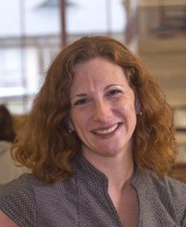
The core of white privilege is that your lived experience is heard and believed.
An overarching manifestation of it is that white people can pretend that race does not matter. We have the privilege of turning off the news, putting down our phones, and walking away from the conversation.
W.E.B. Du Bois didn’t call it white privilege per se, but the concept was central to his examination of the intersections between whiteness, class privilege, capitalism, and colonialism as early as the turn of the twentieth century.
White privilege as it is known today emerged in the late 1980s and early 1990s. Black feminist scholars starting with the Combahee River Collective and continuing to Kimberlé Crenshaw and Patricia Hill-Collins wrote about how white feminists had not been paying attention to the important role of race and intersectionality. Peggy McIntosh was heavily influenced by many of these Black female critical scholars and, in her 1989 essay, “White Privilege: Unpacking the Invisible Knapsack,” she powerfully listed all of the privileges that she had as a white woman. David Roediger’s The Wages of Whiteness in 1991 and Toni Morrison’s Playing in the Dark: Whiteness and the Literary Imagination in 1992 were similarly foundational.
There are tiny expressions of white privilege like assuming Band-Aids will match your skin color—but it’s more importantly about expecting to be protected and survive in moments of life and death.
White privilege shakes out, for example, in interactions with police. The National Academy of Sciences found that, from 2013 to 2018, Black men were 2.5 times more likely than white men to be killed by law enforcement.
It’s going to the hospital and having your pain believed. According to the Centers for Disease Control and Prevention, pregnancy-related mortality rates were 3.2 times higher for Black women than white women between 2007 and 2016.
It is important for white people to recognize that white privilege is not new just because it now has our attention. We must ask ourselves hard questions, learn, and not expect people of color to do the work for us. We should also be cautious about the language of white allyship. It’s not about what hashtags you use or having others see you as a good person. The risk is naming our privilege and then still making decisions that sustain racism.
There are a few things white people can do now to practice anti-racism. First, speak up. It’s OK not to know exactly what to say, but we have to start by naming and challenging racism—including our own. We also must be ready to mess up and to be accountable for when we speak up in a way that reproduces racism, even when that wasn’t our intention.
Stay committed. After the protests have ended, we as white people have the privilege to go back to our regular lives. When we feel like we want to turn it off, that’s our white privilege manifesting itself. Dismantling systemic racism is not just about what we do right now, but also next month, next year, and five years from now.
And be humble. As much as we learn, we will never experience the world in the same way as people of color. Anytime we think we get it, we need to check ourselves.